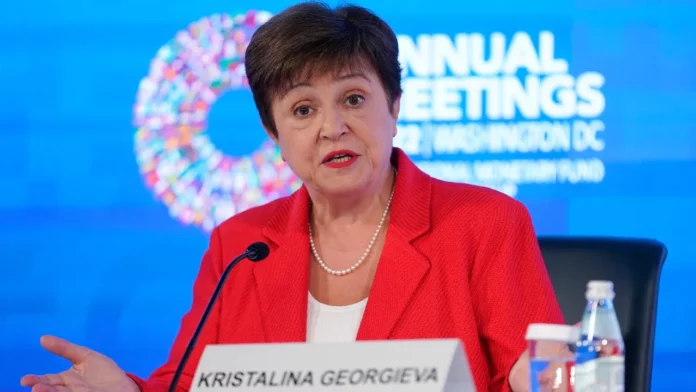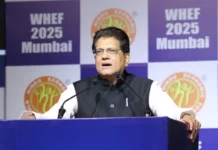NEW DELHI: In an exclusive interview with ANI, KV Subramanian, Executive Director of the International Monetary Fund (IMF) and Former Chief Economic Advisor to the Government of India, highlighted the positive impact of India’s GDP growth on the country’s employment landscape.
Subramanian emphasized that the reliable data from the Periodic Labour Force Survey (PLFS) clearly indicates significant improvements in both the quantity and quality of employment in India.
Subramanian said, “During the lockdown and during the second wave, the employment situation did worsen and this is something that is very clearly shown in the PLFS data which further enhances the trustworthiness of the PLFS data but if you look at overall now, the employment situation has improved significantly and has become better compared to pre COVID levels”.
According to Subramanian, the PLFS data reveals a substantial increase in the number of regular employees and salaried workers, rising from 11.5 crores in 2017-18 to 13 crores, marking a 13 per cent improvement.
This positive trend was notable among females, with a 29.4 per cent increase, and among males, showing an 8.8 per cent rise. Formal employment also witnessed a boost, increasing by 1.2 crores or 25.3 per cent.
Furthermore, Subramanian pointed out that the unemployment rate (UR) in usual status decreased from 6.0 per cent to 4.8 per cent between 2017-18 and 2019-20. The Labour Force Participation Rate (LFPR) increased from 49.8 per cent to 53.5 per cent, and the worker-population ratio (WPR) rose from 46.8 per cent to 50.9 per cent.
These improvements were observed across rural and urban areas, as well as among both males and females.
Highlighting the recent trends, Subramanian noted that formal sector employment increased from 5.9 crores in 2019-20 to 6.3 crores in 2022-23, showcasing a continued positive trajectory in the employment sector.
He emphasized that the data clearly indicates an increase in both the quantity and quality of employment in India.
Subramanian said, “If you look at the formal sector employment it has increased from 5.9 crores in 2019-20 to 6.3 crores in 2022-23. This is clearly illustrative of the quality of employment increasing if you look at the quantity of employment and these are measured using the unemployment ratio, the labour force participation rate and the worker-population ratio”.
He added, “It’s very clear you know, the quantity of employment has also improved significantly with the employment rate with the unemployment rate being a five-year low at 3.2 per cent. The Labour Force Participation ratio (LFPR) increased from about 50 per cent as of 2017-18 to about 58 per cent in 2022-23 and the worker population ratio also registered similar significant increases”.
Subramanian also addressed concerns raised by the Centre for Monitoring Indian Economy (CMIE) data, stating that he does not trust the reliability of CMIE’s statistics.
He emphasized that careful examination of the methodologies used in PLFS and CMIE data comparison demonstrates the discrepancy between the two sources, with PLFS data reflecting the actual employment scenario in the country.
Moreover, Subramanian stressed the correlation between GDP growth and employment, citing evidence from PLFS data.
He emphasized that as GDP growth improves, employment growth also experiences a positive surge, illustrating the interconnectedness of economic growth and employment opportunities in India.
Subramanian said, “We have very carefully examined the methodology and shown that the CMIE data is not reliable and therefore, any of the previous statistics on employment that CMIE released even this statistic is completely at variance with what the PLFS data is showing. There is a lot of evidence for India and the rest of the world that when the GDP growth improves, employment growth also improves and employment and GDP growth go hand in hand. And this is something that is found in the PLFS data. But in contrast in the CMIE data, it is exactly the opposite”.
In conclusion, Subramanian’s insights shed light on the substantial progress made in India’s employment sector, highlighting the nation’s resilience and recovery, even in the face of challenges such as the COVID-19 pandemic.
The data presented by Subramanian reinforces the importance of reliable sources like PLFS in accurately gauging the employment landscape, providing valuable insights for policymakers and economists alike. (ANI)
Also Read: India’s growth outlook soars: Fitch raises medium-term potential to 6.2 per cent







